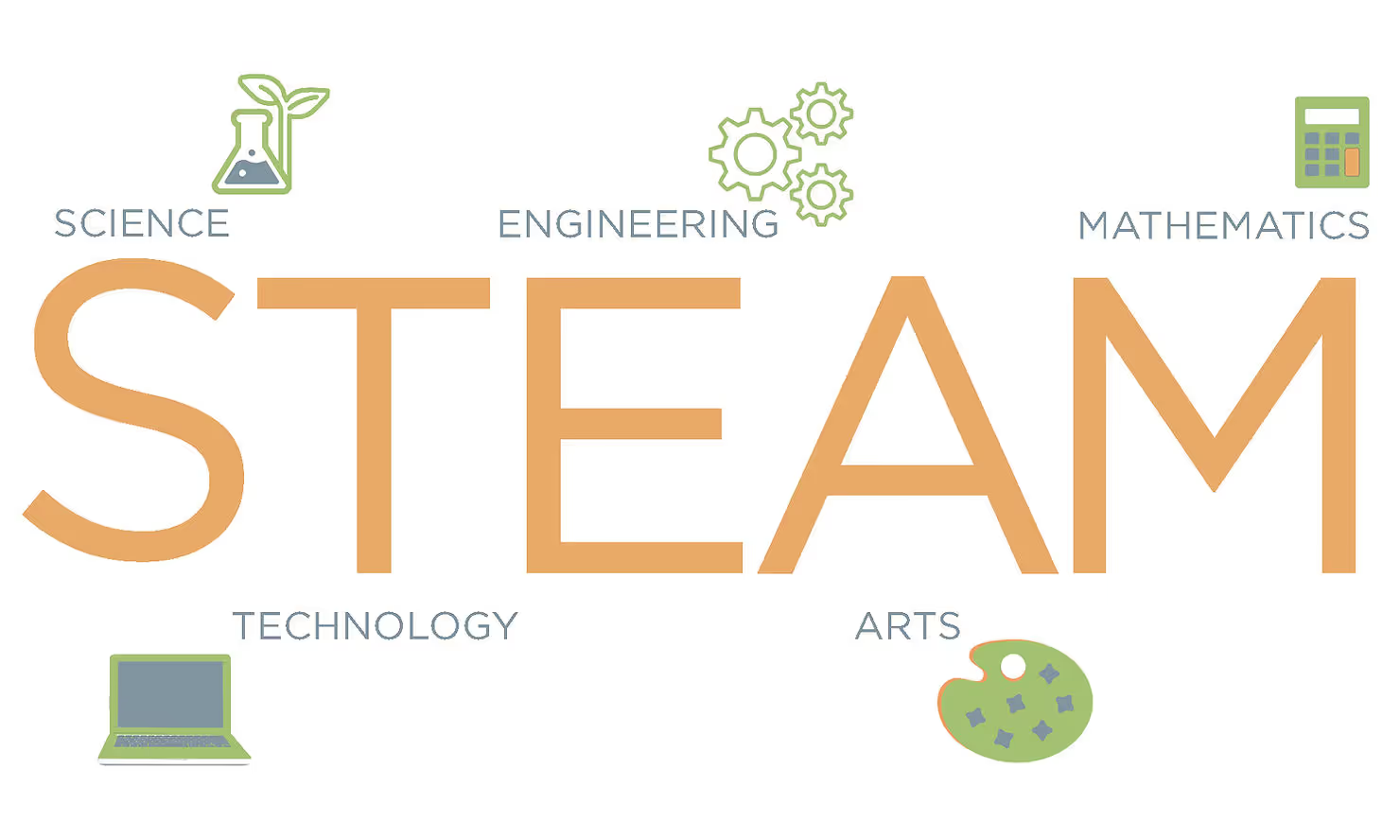The Importance of STEAM Education

At the turn of the 21st century, there was concern that America was lagging behind other countries in Math and Science achievement in schools. In 2001, the National Science Foundation introduced the concept of "STEM- based education" in an attempt to close the gap. Later, art was added and the idea of a "STEAM Educational Framework" was coined by Georgette Yakman, a Middle and High School Engineering and Technology teacher.
In my opinion, solid educators have been using these concepts long before there was an acronym to represent their importance. The disciplines of Science, Technology, Engineering Art and Math are all interrelated and should be experienced collectively.
By definition:
Science: the study of nature and the behavior of natural things
Technology: using tools and methods to achieve goals.
Engineering: the application of knowledge overcome obstacles.
Art: application of skill or imagination to express ideas
Mathematics: the study of structure and space.
What is the difference between STEAM and its slightly older educational cousin STEM?
In simplest terms:
STEM: What and how things can be done.
STEAM: Why and by whom things can be done.
As I have grown in my career as educator, I have learned that children and adults learn by doing and by teaching others more successfully than by listening. When students build a structure, they apply all aspects of STEAM.
During our most recent Spring Break Camp at AHF, students were tasked with building a nature sculpture. Given objects from nature (sticks, pinecones, raffia, rocks, leaves, twine, flowers) a board, hammer and nails and a recipe for homemade glue. This open-ended activity challenged kids ages 5-14 to build a sculpture. The results of this activity were as varied as the students that created them. This simple activity applied all disciplines of STEAM.
Science in the variety of objects created by nature as well as the chemical change that occurs when mixing milk, vinegar and baking soda to make glue.
Technology in application of a hammer and nails to their project. Technology does not always refer to tech-y gadgets but can often refer to innovations that solve problems.
Engineering with application of the engineering design process. Will a pine cone balance on top of a twig? Why or why not? How can I better support my structure?
Art in the expression of their idea of “sculpture” using materials provided.
Mathematics in the applications of mass and balance. Can a small twig support a large rock? Why or why not?
At Austin Hatcher Foundation for Pediatric Cancer, we strive to improve the lives of families experiencing childhood cancer. Often this involves diversionary therapy, the use of recreation and/or play as an addition to treatment. STEAM activities are an important part of our therapeutic process.
To learn more about STEAM and how you can get involved at AHF, visit www.hatcherfoundation.org!




.png)
.png)
